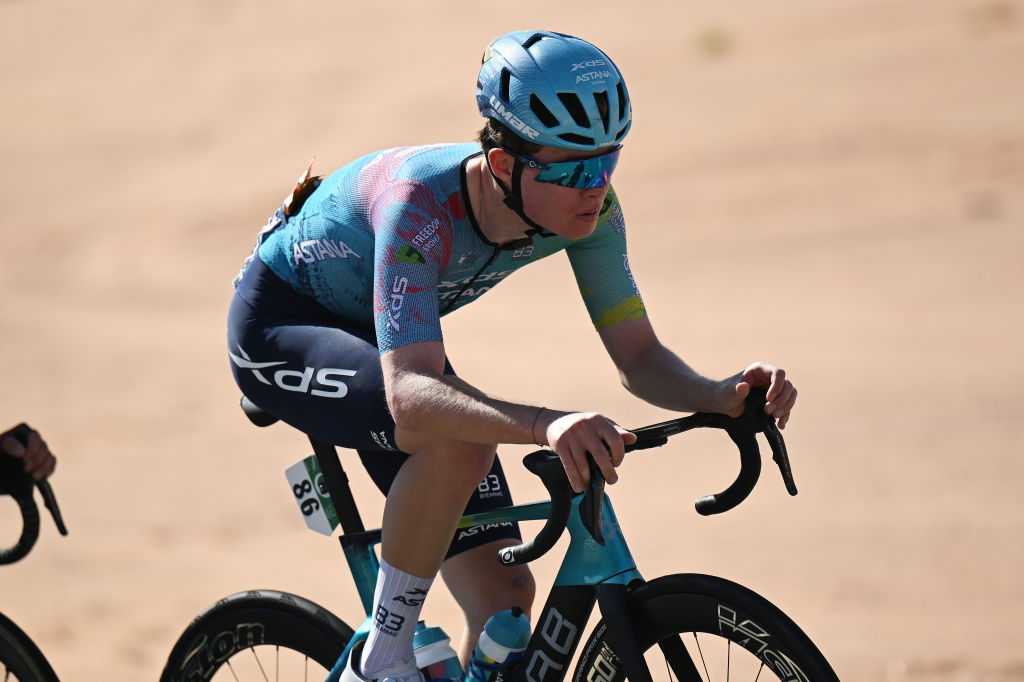Five moments that defined the 2022 Giro d'Italia
Van der Poel's entertainment value, Hindley's knock-out blow, Yates' untimely exit, Nibali's retirement and the battle for Turin
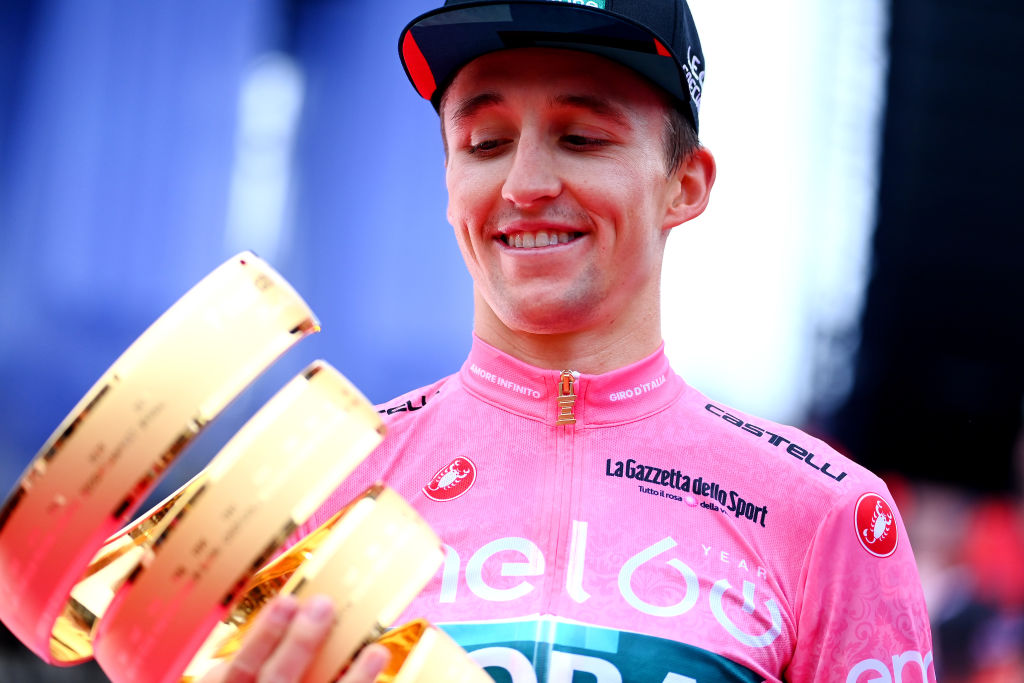
The 2022 Giro d’Italia ended with Jai Hindley (Bora-hansgrohe) as the first-ever Australian winner of the Corsa Rosa and with numerous special and entertaining memories emerging from its 21 days of racing.
The Grande Partenza in Hungary seems a long time ago now but it started the daily racing in the Giro d'Italia with a thrilling uphill sprint and Mathieu van der Poel (Alpecin-Fenix) in pink. Crashes and injuries took out big-name contenders like Miguel Ángel López (Astana-Qazaqstan), Simon Yates (Bike Exchange-Jayco) and Tom Dumoulin (Jumbo-Visma), while the key stages gradually revealed who would and who wouldn’t fight for overall victory.
Bora-Hansgrohe showed they were more than a match for Ineos Grenadiers and Bahrain Victorious, with Hindley emerging as the German team’s best option to fight with their respective leaders, Richard Carapaz and Mikel Landa.
While fortunately a new generation of Italians is now emerging, Vincenzo Nibali (Astana-Qazastan) gave Italy plenty to cheer for in his final Giro d’Italia. In this race alone, Alberto Dainese (DSM), Stefano Oldani (Alpecin-Fenix), Alessandro Covi (UAE Team Emirates), and Matteo Sobrero (BikeExchange-Jayco) all won stages, while Giulio Ciccone (Trek-Segafredo) bounced back after two hard years to give Italy a total of five victories.
And Nibali may not have won a stage or finished on the podium, but a 4th place overall is no mean achievement, either.
When Hindley cracked Carapaz on the Marmolada to snatch the maglia rosa, it was arguably the biggest moment of the race, and well worth the wait. His move turned the race upside down, giving Hindley a place in history and cancelling out his last-minute defeat and disappointment of 2020.
These are Cyclingnews five moments that defined the 2022 Giro d’Italia.
Simon Yates crashes on stage 4
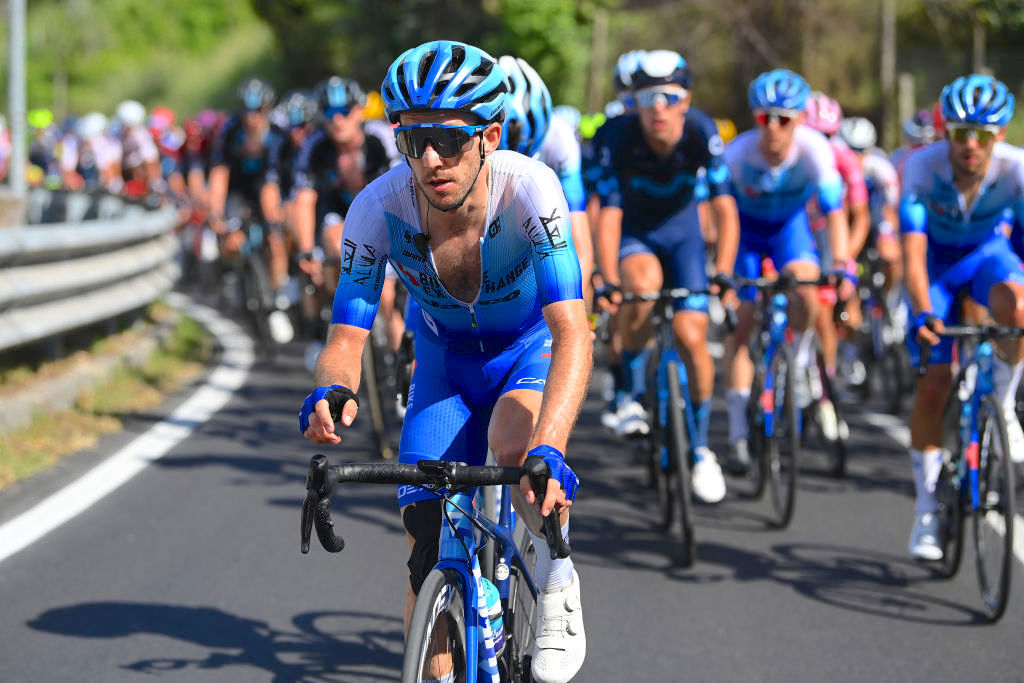
As the most recent Giro podium finisher, of all the top favourites to drop out of contention early Simon Yates (BikeExchange-Jayco) was arguably one of the most significant. He was far from alone.
Tom Dumoulin (Jumbo-Visma), Wilco Kelderman (Bora-hansgrohe), Romain Bardet (DSM) and Miguel Ángel López (Astana-Qazaqstan) all fell by the wayside, not to mention numerous outsiders of the calibre of Hugh Carthy (EF Education-Easypost) or Giulio Ciccone (Trek-Segafredo) while the veterans that nominally half-filled the power vacuum like Nibali and Alejandro Valverde (Movistar), both in fine form on the Blockhaus, subsequently proved unable to maintain their promising starts.
The latest race content, interviews, features, reviews and expert buying guides, direct to your inbox!
The deadlock between Hindley and Carapaz might have suggested this was a Giro where the GC battle was frozen, but in fact just beneath the surface, the depth charges of injury and/or illness and/or poor form did not cease to scupper one big name after another. So Yates' initially inoffensive injury didn't just reshape the entire race, it defined one of its key narratives: this was a Giro of attrition.
For the space of a week, it almost went unnoticed. An early crash on the Mount Etna stage for Yates had merited a brief mention on the Giro’s race radio, but beyond that short or mid-term there was little further indication of how important it would be.
Yates finished with all the other favourites on the summit of Etna, after all, even cheerfully calling out a greeting to a colleague who formed part of a rival team staff as he wheeled to a halt in the shadow of the Refugio Sapienza. The way the team’s press staff kicked forward repeated requests for an interview with the man himself as far as Naples, a full five stages later, could be explained with hindsight by their desire to keep Yates' condition out of the public eye for as long as possible, of course.
In the mountains of Calabria there were no visible in-race indications that something more serious was amiss. And when Yates did explain that his knee injury had some consequences to the media at Naples, it was complete with an understandably sharp reference to the unnamed rider who'd caused him to fall for 'not knowing how to use his brakes'. Yates also insisted that any injury did not constitute a long-term impediment to his racing.
On the Blockhaus, an 11-minute time loss meant things fell apart completely, of course, proving that despite his excellent start to the race with a time trial victory in Hungary, that crash had taken a serious toll. There were flashes of brilliance in Turin a week later, but despite his tenacity, finally the pain proved too much for the Briton and he quit in the Dolomites. (AF)
Vincenzo Nibali announces retirement then turns back the clock
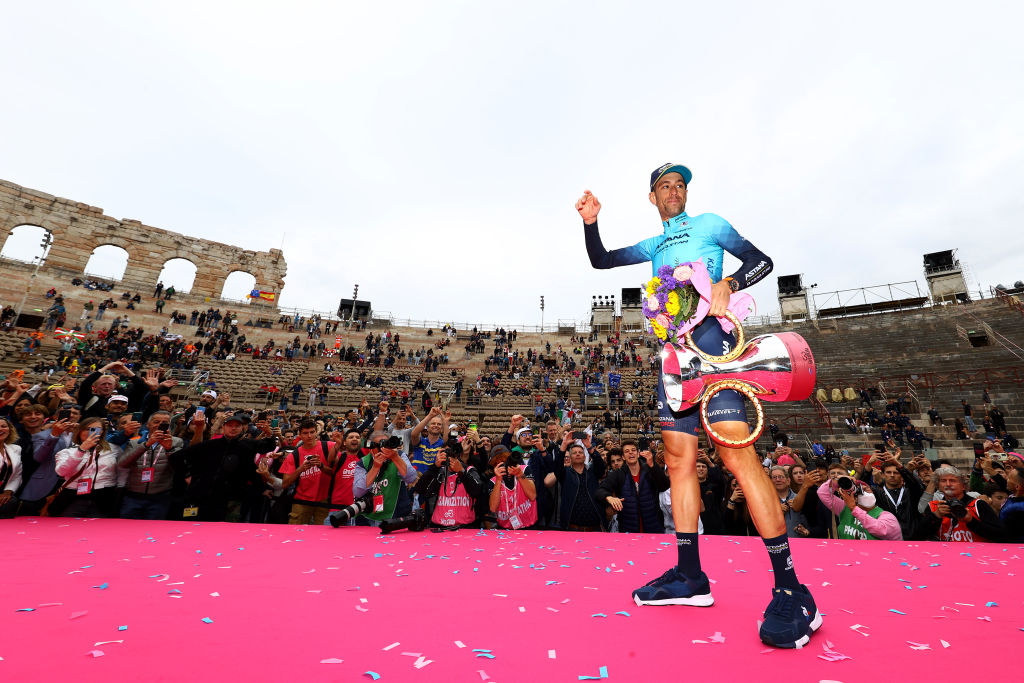
When Vincenzo Nibali sat blinking back tears on the Processo alla Tappa set in his native Messina, it seemed as though his Giro was about to become a sort of farewell tour. The previous afternoon, after all, Nibali had lost over two minutes on Mount Etna, the mountain so integral to his origin story as a cyclist.
Although he spoke hopefully of hunting for stage wins later in the race, it was hard to shake off the feeling that the biggest impression he would make on this Giro was this very act: announcing his retirement live on television and before his own people, across the harbour from the gleaming statue of La Madonna della Lettera.
Perhaps if Astana-Qazaqstan leader Miguel Ángel López hadn’t abandoned in Sicily, Nibali might have quietly dropped down the overall standings to allow himself the freedom to infiltrate the early break. Then again, perhaps such a submission would have been anathema to Nibali’s interpretation of the Giro.
Whatever the case, Nibali gamely limited his losses to a minimum at the Blockhaus and his condition appeared to be in crescendo across the second week. On the tumultuous afternoon in Turin on stage 14, Nibali finished alongside Hindley and Carapaz, moving back into the top 10. Come the third week – historically, his third week – Nibali was suddenly, improbably, in the mix for a podium finish.
The grand rimonta never quite materialised, of course, but while Nibali steadily conceded time to Hindley and Carapaz through the final days, he rose further in the standings, finally settling at 4th overall in Verona. His proximity on GC effectively dashed any prospect of an emotional farewell stage win, but perhaps this remarkable show of consistency was a more appropriate way for Nibali to sign off on his relationship with the Giro.
Nibali won the Giro twice, but above all, he was a constant for the home nation, compiling six podium finishes in a decade. No other rider offered such guarantees. The 2022 Giro was one last reminder that the landscape of Italian cycling will look very different without him. (BR)
Bora-Hansgrohe show their hand in Turin, while Carapaz goes too soon
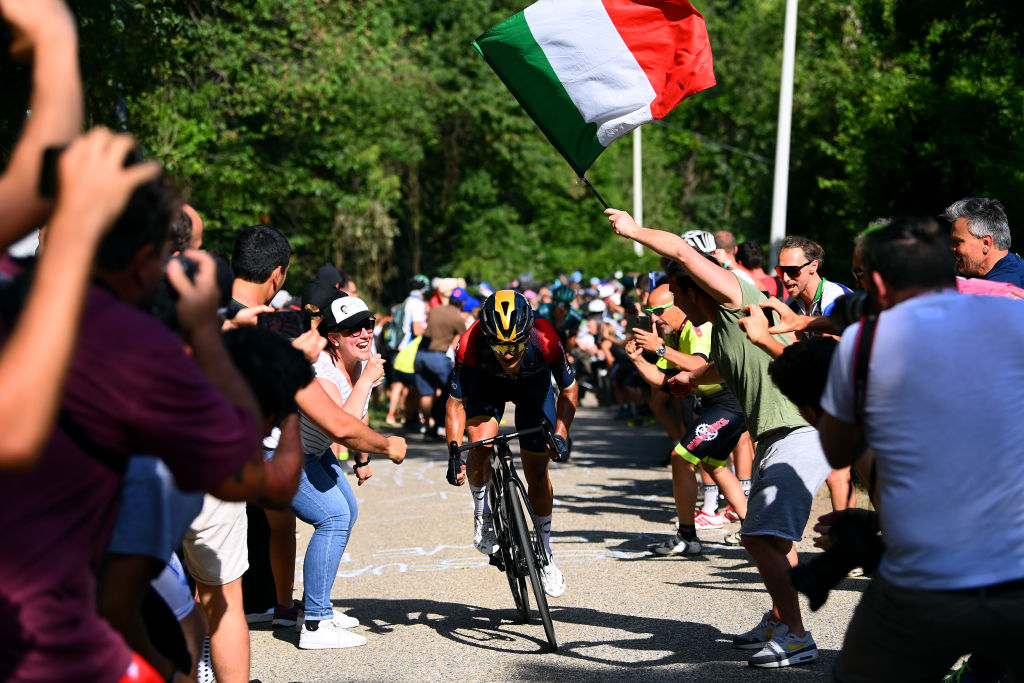
Whenever a new Giro route is announced, the great mountain stages tend to hog the attention, with their imposing profiles, gaudy statistics and evocative names. But when the 2022 Giro was revealed in instalments last winter, stage 14 around Turin drew the eye. Although just 147km in length, the stage featured some 3,000m of climbing on a dramatic circuit over the climbs of Superga and the Colle della Maddalena.
On the eve of the stage, somebody suggested to local favourite Diego Rosa (Eolo-Kometa) that it would prove something akin to a ‘super Milano-Torino.’ Rosa suggested it might be something more. “It’s much harder than that,” he said. Prescient words.
The brevity of the stage and the relentless terrain meant that the attacks were likely to come early and often. That had been the case, after all, a week previously on the hilly circuit in the hinterland of Naples. The difference in Turin was that it quickly developed into one of the defining days in the battle for the general classification.
Enrico Gasparotto joined Bora-Hansgrohe as a directeur sportif last winter, and one of his first acts with the team was to drive the route of stage 14 around Turin. He came away convinced that it was the kind of terrain where his charges could put Ineos under pressure, and so it proved. Bora-Hansgrohe seized control with 80km remaining, and Wilco Kelderman delivered a man of the match performance with his long, long spell on the front, which left just a dozen riders still standing come the final lap.
Carapaz was long since isolated from his Ineos teammates, but the Ecuadorian reasoned that attack was the best form of defence, powering clear on the last time up Superga and building a lead of almost half a minute. Initially, it looked like a Giro-deciding move, but it soon became clear that Carapaz had flown too close to the sun. His lead melted in the finale as Hindley and Nibali bridged across on the Maddalena, with the stage winner Yates following soon afterwards.
Although Carapaz ended the day in the pink jersey and stretched the overall standings, it still felt like something close to a defeat on the banks of the Po. In Turin, Hindley and Bora-Hansgrohe had shown they had the measure of Carapaz and Ineos. The favourite had company. (BR)
The Marmolada breaks the deadlock
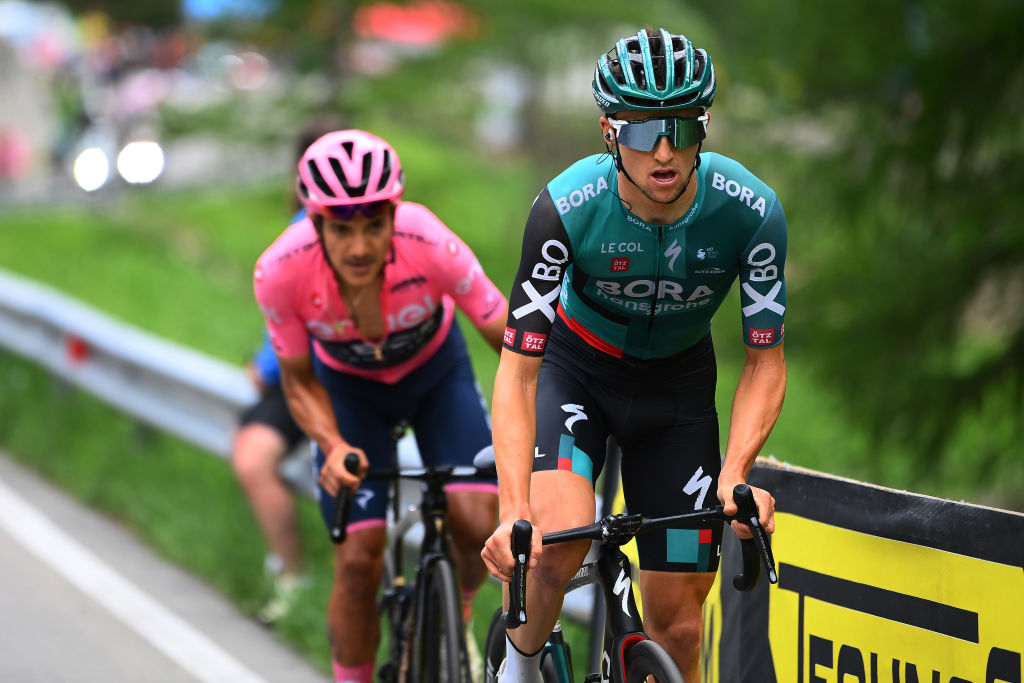
Beneath the precipice of the Marmolada, Lennard Kämna’s answers to the reporters milling around him were as short and essential as his balance-tipping turn on behalf of Hindley three kilometres further down the mountain. “I did one really hard pull, all that I had, and Carapaz was dropped, and Jai could take a lot of time,” Kämna shrugged. What else did we need to know?
For three weeks, the Giro had demonstrated that suspense and excitement are not necessarily the same thing. From the start in Budapest all the way to the Passo Fedaia, nobody could predict the eventual winner with any degree of certainty, but there had been no great fluctuations atop the overall standings. This was a Giro of attrition, with contenders falling by the wayside until only two were left standing on the Passo Fedaia, the final mountain pass of the race.
Bora-Hansgrohe had started laying the groundwork for an attack on Carapaz the previous day in Slovenia and Friuli, but Hindley thought better of the idea, like a baseball pitcher shaking off his catcher. Instead, he had the patience to wait for the very last opportunity this Giro afforded him, on the wickedly steep section of road past Malga Ciapela. All or nothing.
The Dolomite tappone took in the San Pellegrino and the Pordoi, but Carapaz still had a solid complement of Ineos riders around him on the Fedaia. Undeterred, Hindley began his offensive 3.4km from the top, with Carapaz immediately following. Kämna, part of the day’s early break, had dropped back to wait for Hindley, and the German gradually dialled up the pressure until Carapaz could resist no more. (BR)
Mathieu van der Poel takes 3rd in the Verona time trial (and celebrates finishing in style)
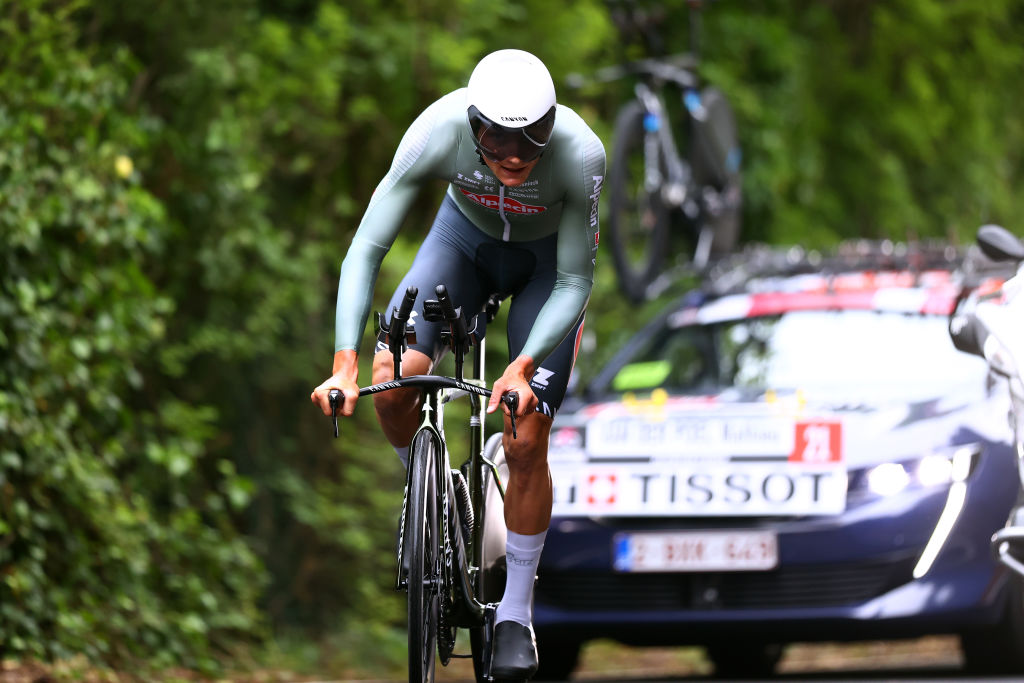
Mathieu van der Poel (Alpecin-Fenix) celebrated finishing the Giro d’Italia with an aggressive ride in the Verona time trial, a wheelie as he entered the arena and then a slice of pizza provocatively (for Italian foodies, at any rate) covered in pineapple. But if it was his opening victory at Visegrád which had indicated what he was capable of achieving in this year's race, that was surely fulfilling expectations. But his final flourish in Verona TT told us how much the Giro had mattered to him and how seriously he had risen to the challenge.
The Dutch rider appeared to enjoy every moment of the Corsa Rosa, dismissing suggestions that he should climb off at some point and save himself for the Tour de France. Instead he attacked time and time again, even on the last mountain stage to the Marmolada when he had little chance of success.
The Drone Hopper team may have won the Premio Fuga prize for spending the most kilometres up the road but van der Poel almost equaled them single-handedly. He went in the attack of the day five times, racking up 626km off the front.
Should he have won more or ridden smarter? Perhaps, but a successful Giro d’Italia can’t be calculated in just numbers and stats.
Van der Poel won the opening road stage to Visegrad, was second in the Budapest time trial, wore the maglia rosa for three days and was even third in the final Verona time trial. Arguably far more importantly, Van der Poel seemed to fall in love with Italy as the Giro and the Italian tifosi loved him and cheered for him all the way to Verona.
More than half of the 21 Giro d’Italia stages were won from breakaways. That reflects the lack of a dominant team able to control the race but also the inspiration Van der Poel gave to a host of riders.
His victory might have come on the first day, and his lead only lasted for less than half of the first week, but plenty of riders would sign on the dotted line for that. And from start to finish, the 2022 Giro d’Italia would have been far less entertaining without Van der Poel. (SF)

Barry Ryan was Head of Features at Cyclingnews. He has covered professional cycling since 2010, reporting from the Tour de France, Giro d’Italia and events from Argentina to Japan. His writing has appeared in The Independent, Procycling and Cycling Plus. He is the author of The Ascent: Sean Kelly, Stephen Roche and the Rise of Irish Cycling’s Golden Generation, published by Gill Books.
